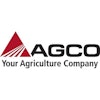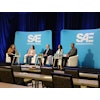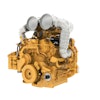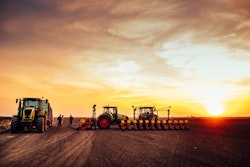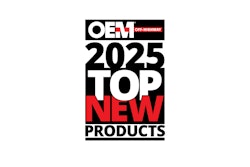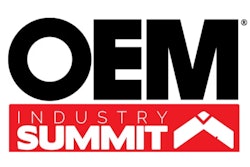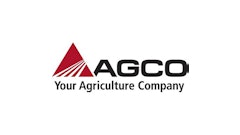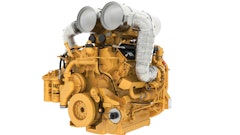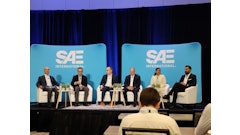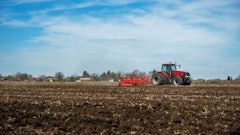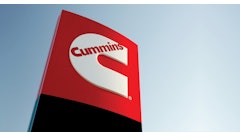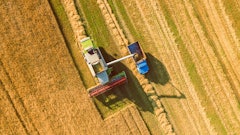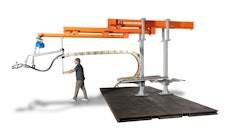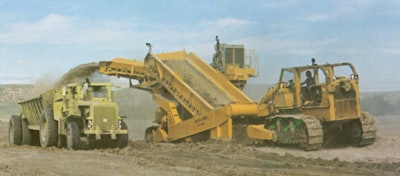
In the last installment, we looked at the Euclid BV and Sierra travelling belt loaders. While these machines were remarkably productive in proper conditions, they were beset by limitations. For the more successful of the two, the BV, the issues were:
- Clogging by material sloughing from the bank behind the towing tractor or at the throat of the conveyor
- Material rolling back down the belt or the belt itself slipping; susceptibility to wear and damage, especially from rocks
- High maintenance costs
- Loss of energy moving it on its own crawlers
- Poor maneuverability and steering
- Difficulty maintaining grade
- Inability to work contours.
For all their issues, the BVs typically had long service lives, and remained the most efficient means of loading bottom-dump trucks and scrapers. BV owner Francis H. Holland noted in the 1960s, “The old Euclid loader had to be lived with” because it had been discontinued in 1956 — primarily due to large motor scrapers rendering it obsolete — and no comparable replacement was available for its kind of high-volume earthmoving.
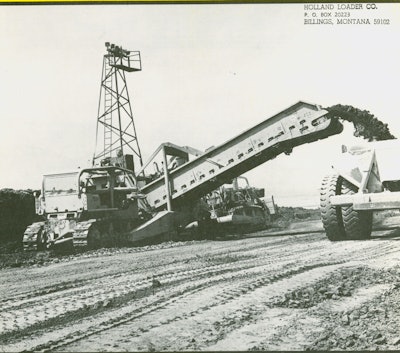 One of the four Holland loaders at Perris Dam makes quick work of loading a 110-ton capacity Euclid bottom dump. It’s equipped with a vertical cutting edge.Holland Loader Company Collection, HCEA Archives
One of the four Holland loaders at Perris Dam makes quick work of loading a 110-ton capacity Euclid bottom dump. It’s equipped with a vertical cutting edge.Holland Loader Company Collection, HCEA Archives
Bottom-dump trucks were the cheapest haulers to run, and much larger models were available in the 1960s. Holland realized that costs would be further reduced if larger, more dependable, higher capacity loading equipment was used. So, he began designing his own belt loader, using ideas he had conceived as early as the 1950s; and, in 1969, he founded the Holland Loader Company to manufacture it.
His design was built around increasing and streamlining the flow of material through the loader, with greater power, elimination of the undercarriage, a 72-inch belt, entirely new means of mounting it to the propelling tractors, and more efficient drive for the conveyor.
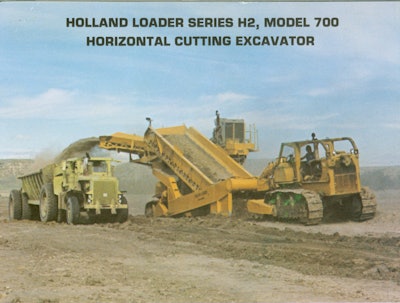 A later Holland Series H2 Model 700 loader. Note that the flow of material upward is along rather than across the direction of travel. It excavates like a scraper with a horizontal blade.Courtesy: Holland Loader Company Collection, HCEA Archives
A later Holland Series H2 Model 700 loader. Note that the flow of material upward is along rather than across the direction of travel. It excavates like a scraper with a horizontal blade.Courtesy: Holland Loader Company Collection, HCEA Archives
The loader was introduced circa August 1972, and one of its first major uses was at Perris Dam in southern California. At Perris, moving at three miles per hour between two Cat D9s, a Holland with a 410 hp engine loaded a 110-ton Euclid bottom dump truck with loam and sand in 43 seconds, or with ripped material in 90 seconds, at a rate of 75,000 to 120,000 cubic yards per two-shift workday, more than Euclid’s new Super BV and at lower costs.
Despite problems, the Hollands had several benefits such as:
- Nearly 1,500 hp between the loader and two propelling tractors
- Its entire weight rode on the tractors for more efficient movement and flotation
- Smoother operation with no rollback of the belt
- Superior tracking, ground clearance and cutting inside curves
- Reduced clogging; improved breakout of bank material
- Increased discharge height relative to cut
- Overall simplicity of design.
Holland loaders went on to achieve astonishing productivity, loading 180-ton-capacity trucks in less than a minute. They could also be used with traveling transfer and discharge conveyors for direct placement from cut to berm or spoil bank.
